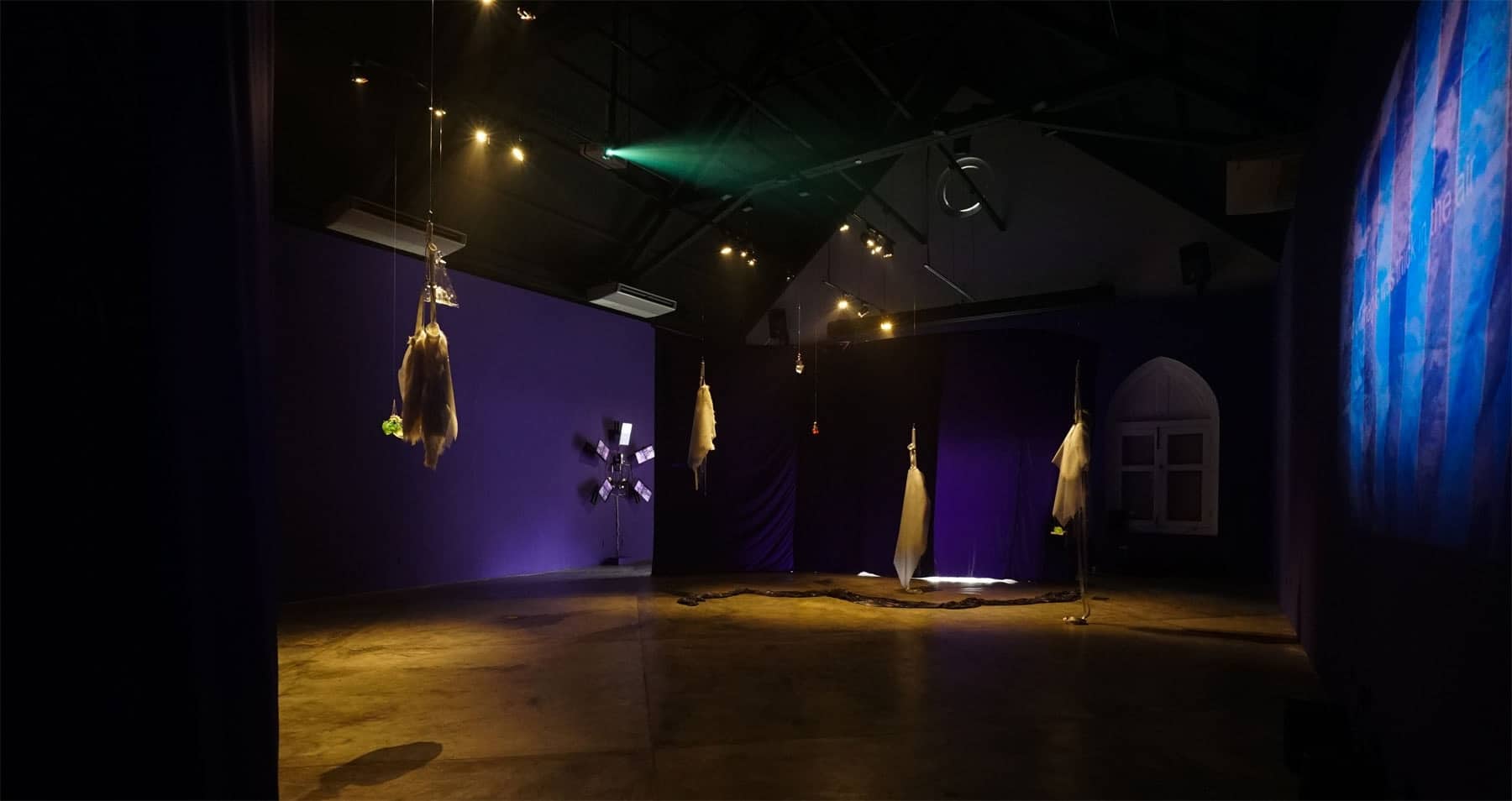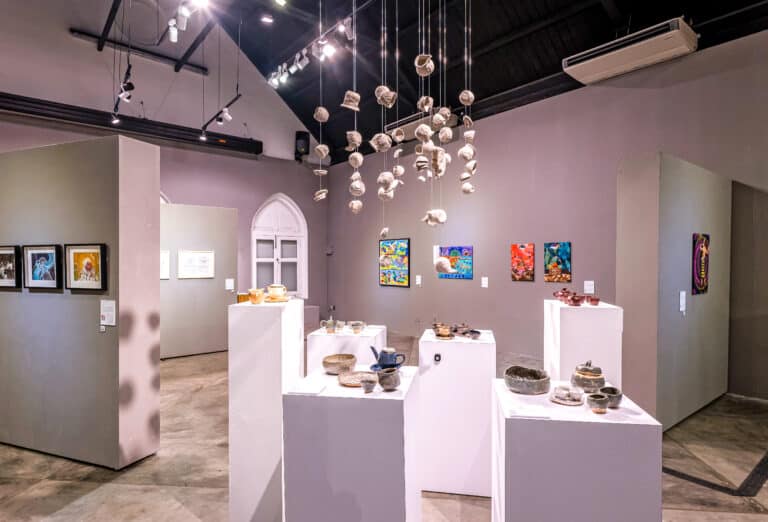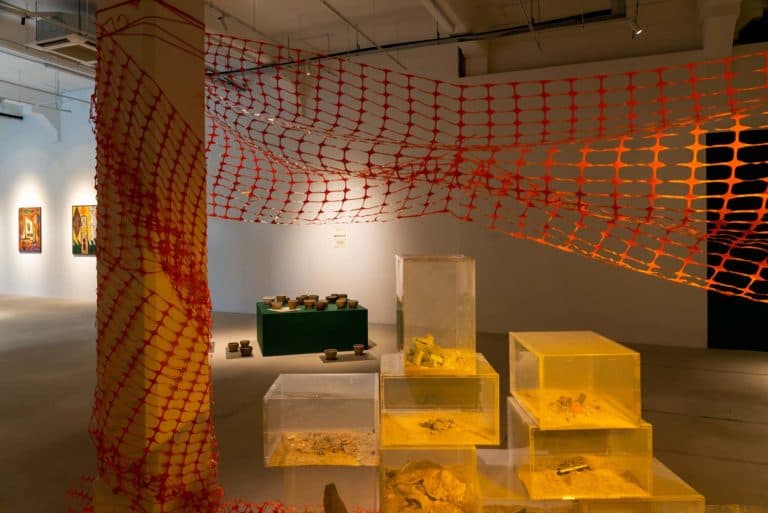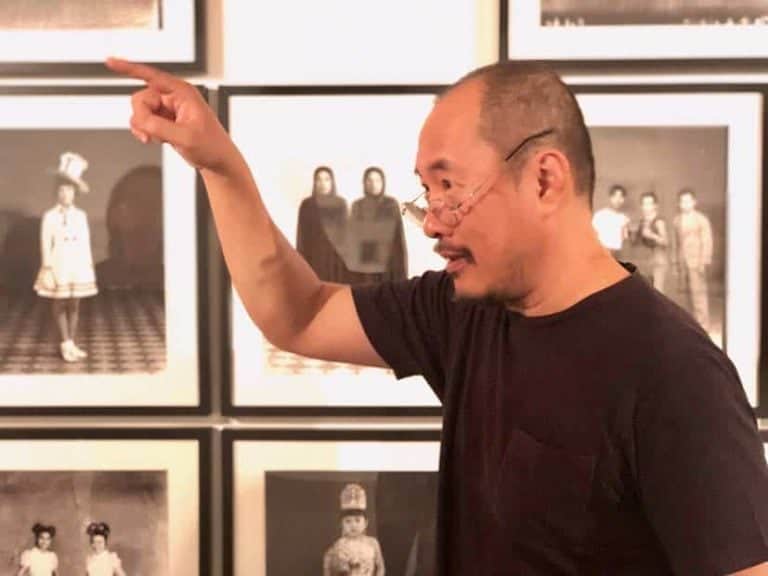A lot can happen in half a second, in the unseen spaces of the body. Something that you touch, smell, hear or taste or see could quicken your pulse, or perhaps, tug at your heart. You might not yet know why you feel the way you do, but you certainly feel it keenly. The knowing why comes later.
To explain this space between experience and understanding, otherwise known as affect, curator Seet Yun Teng borrows philosopher Brian Massumi’s term and calls it “the missing half second”. According to Massumi, this missing half second is the space in time that the body needs in order to react to and make sense of stimuli that it experiences. While the term “missing” might seem to imply that this gap is an empty one, Yun Teng explains that it is in fact over-full with sensation that has yet to be parsed.
“It’s because cognitive processing indisputably takes time – the body feels and senses more quickly than it can perceive,” Yun Teng writes in her curatorial essay for immaterial bodies, an group exhibition that she has staged at the Objectifs Chapel Gallery as this year’s recipient of the Objectifs Curator Open Call. Featuring works by Singaporean artists Denise Yap, ila, Wayne Lim and Weixin Quek Chong, it’s an exhibition that seeks to explore the concept of affect, which she calls “this gap between rational understanding and non-rational comprehension”.
If you’re anything like me, then you’re probably thinking: isn’t affect just a misspelling of effect? I know, the concept of affect can take some time to grasp for those of us who are not psych majors or artists with a specialist interest in this area. But lest this discourages you from exploring this exhibition further, know this: “None of the works [in immaterial bodies] are prescriptive – it’s not about saying something, but rather asking questions and letting people experience it,” says the curator.
In the spirit of exploring the show from more accessible entry points, I bribed invited my non-art world brother M and his friend B to attend the exhibition with me, and got them to share their thoughts on the works.
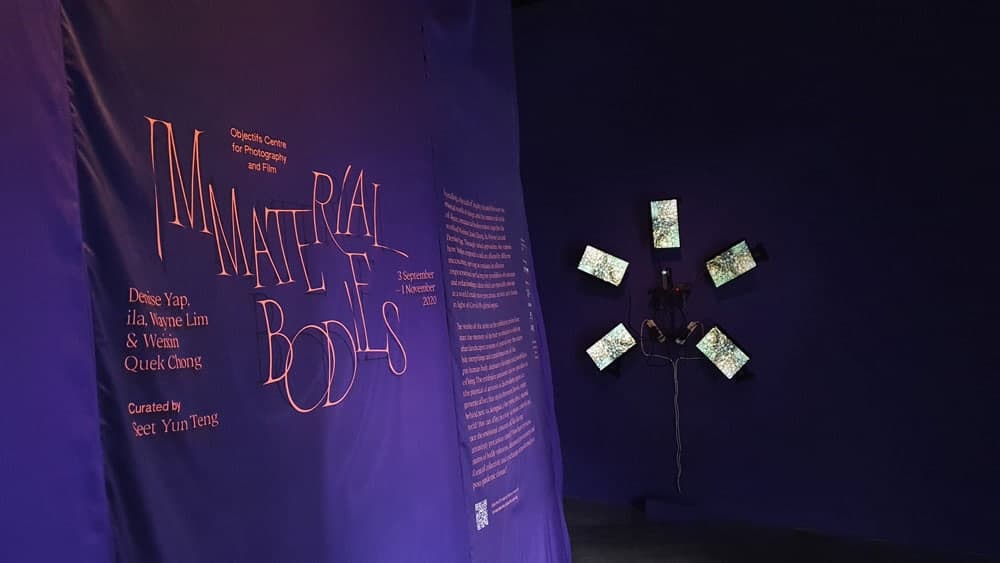
“Where does the exhibition begin?” B asks as we enter the gallery. It’s a valid question, considering that the curatorial intervention seems animated, as if it were an artwork itself. Our attention is captured by plush purple curtains that cut an undulating arc in space, waving softly in the breeze. The same rich purple coats the walls and creates a decidedly theatrical setting against which we experience the works.
“It starts the moment you enter,” M surmises, and he is not wrong. We are greeted by Denise Yap’s Miss Q, a collection of five video screens that have been arranged in the formation of a flower. The matrix on each screen pulsates hypnotically, striking a rhythm that imbues Miss Q with the quality of a living, breathing organism.
An aspiring neurosurgeon, M compares Miss Q to a living brain, and notes how the latter moves in a similarly rhythmic manner due to intracranial pressure. The uncanny parallels between the human and non-human here are telling of the context in which Miss Q was conceived – which is to say, as part of a longer speculative fiction that the artist is working on, titled New Growth.
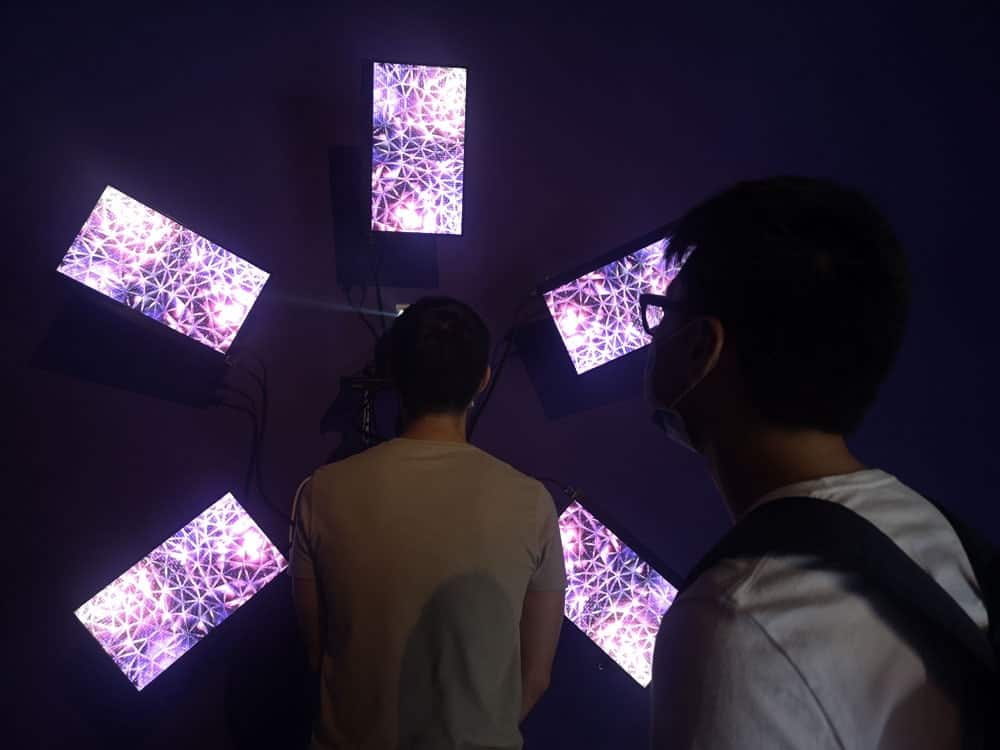
New Growth accepts and normalises what Yun Teng describes as “a future world… [of] alternative kinships, non-nuclear families and gender fluidity”. In this queer future, a hybridised techno-orchid being such as Miss Q can perhaps thrive. One briefly glimpses this hypothetical future through the text excerpts that are projected on the curtain opposite of Miss Q. However, if you were hoping for a piece of speculative fiction the likes of Isaac Asimov or – closer to home – Neon Yang, you will be disappointed. The flashes of excerpts in their ‘90s-era WordArt aesthetic are fragmented and difficult to decipher. Might this be the artist’s way of hinting at the futility of opening a portal into this queer utopic imagining from our present reality?
Nonetheless, Miss Q herself is a captivating specimen of this fictive other world. M agrees, saying, “I like the interface between science and nature, the oscillating patterns and well, not to mention that it’s just pretty to look at lah.”
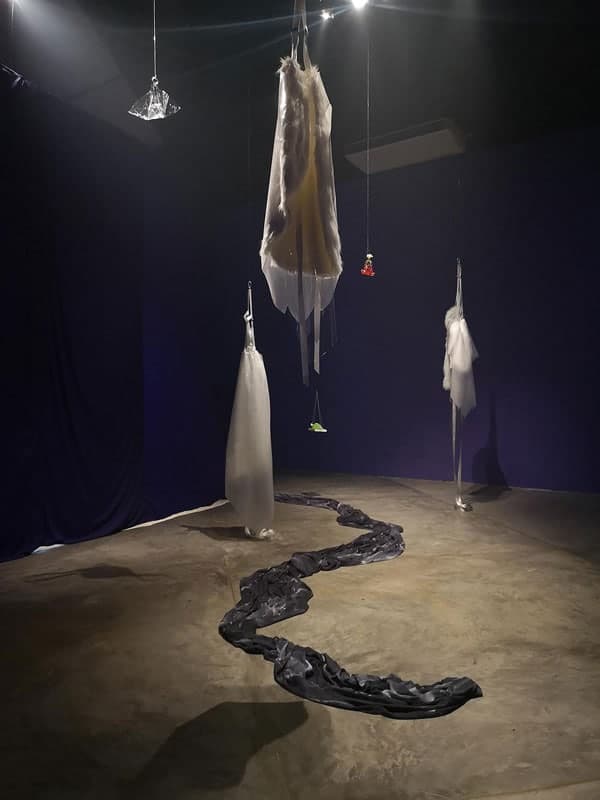
Turning the corner, we encounter Weixin Quek Chong’s collection of suspended objects entitled larval limbic. To M, the pale, floating soft sculptures conjure the image of angels and ghosts, especially when considering the title and incidental location of the exhibition (a chapel). He loosely relates the various aspects of the work to a sense of the afterlife: the plastic kitsch objects as totems that possibly possess spiritual value, and the rivulet of black cloth calling to mind the River Styx. Sounds of dripping water permeate the air, and the installation takes on the qualities of a watery cavern.
B, on the other hand, has a more quotidian point of view. Pointing to the disparate assortment of material, he proposes that larval limbic is a commentary on pollution. In this space created by art, both of them can be simultaneously right. Is it important to them that they know what the artist intends? I wonder.
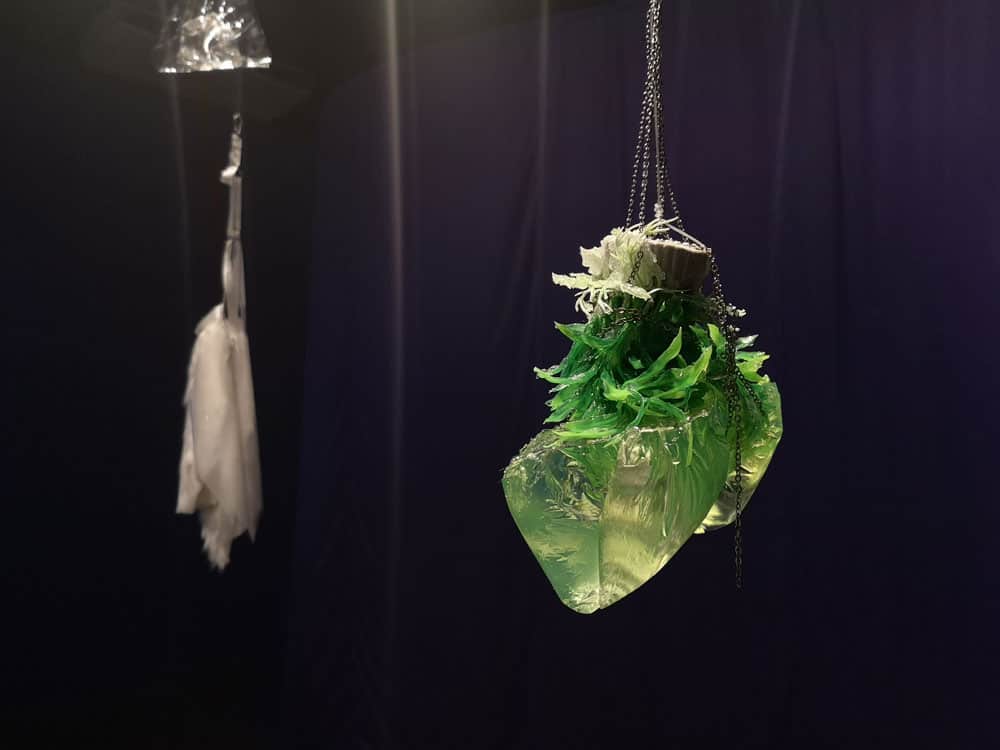
B replies, “It’s important to me because it gives structure. This may not matter to some people, but I’d want to know what the artist was thinking. After all, when I go to see art, it’s to understand the artist’s interpretation of life.”
M takes a different approach: “I guess it’s a conversation between the artist’s intention and the viewer’s interpretation of the piece. And ultimately, each person may leave with a completely different interpretation, but we take a little bit of what the artist intends with us as we move along.”
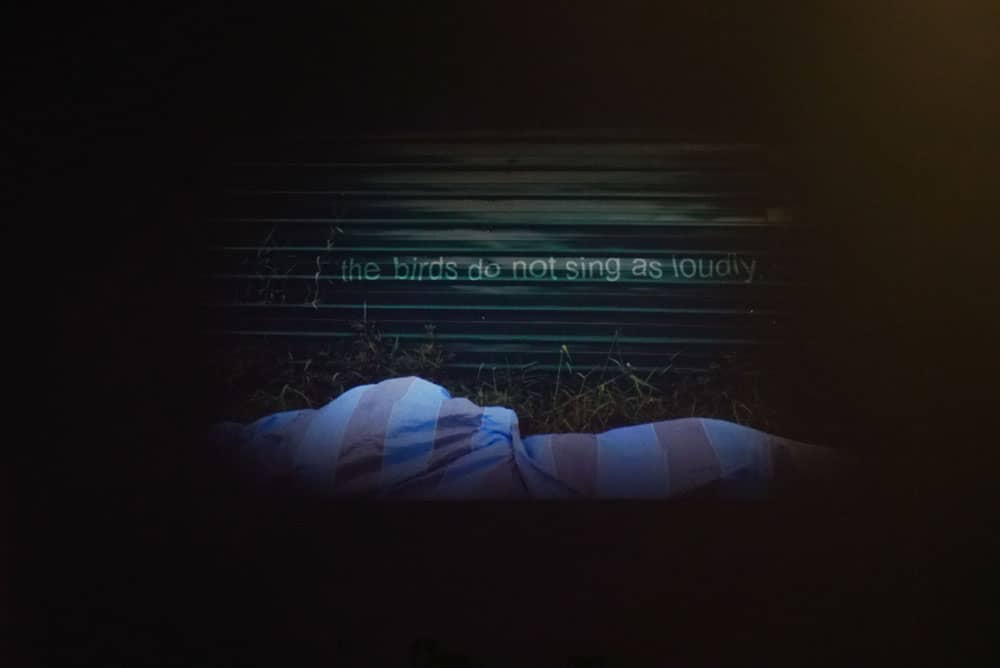
We stop to watch ila’s hancur badan dikandung tanah. Against the backdrop of construction hoarding, a piece of tarpaulin flutters in the wind. As it moves, it becomes apparent that there are bodies beneath the sheet, alternately embracing and struggling with each other. Lines of text materialise like ghostly apparitions over the image. They are taken from responses to a survey that the artist had conducted, in which she asked the general public to share about places of personal significance to them that no longer exist. The words twist and disappear as if carried off by the breeze, making them seem far lighter than the weight of their meaning.
“With this piece, ila continues to explore the relationship of the human body to sites that we can no longer return to,” Yun Teng comments. “It questions the impact of constant erasure in our urban landscape. What disappears and what remains? What are the consequences of the precarious relationship between urban progress and our own lived experiences and memories?”
In alluding to Singapore’s perpetual state of construction through the scaffolding backdrop and tarpaulin, B feels that hancur badan also calls to mind the notion of temporary shelters. He interprets the beings under the tarp as trying to break free from it, such that the tarp is both a source of safety as well as restraint. To vulnerable groups of people such as refugees and migrant workers, state protection possesses this temporal, indeterminate quality.
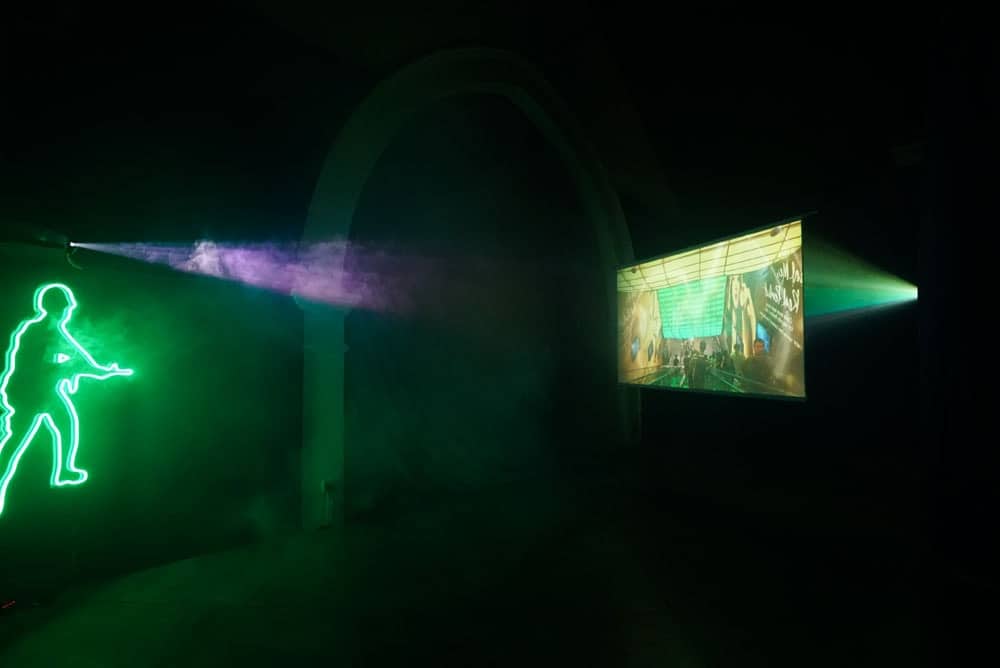
In contrast to the quiet poetry of ila’s work, the sounds that Wayne Lim’s The Hyperrestrained Order emits feel jarring and intrusive. Explosions, video game-like commentary and National Day Parade emceeing spew forth from the two-channel video at the far end of the gallery at regular intervals. On the screen, video snippets of the military displays from the annual National Day Parade are interspersed and overlaid with scenes of supposed prosperity: shopping malls, MRT stations and high-rise buildings. The explosions of fireworks are timed in sync with the explosions of bombs, thereby conflating civilian celebration with violent displays of military might.
All this is accompanied by emissions of smoke from an actual smoke machine and periodic epilepsy-inducing flashes of a neon sign in the shape of an army soldier wielding a rifle. This motif is a familiar symbol to NSmen, who colloquially refer to it as the “mob-manning man” because of how its appearance on national television mobilises relevant NS units to report to camp within the next 24 hours. An all-round assault on the senses, it perhaps comes as no surprise that M is quickly agitated by this work. Similarly, B is inclined to dismiss the work as a piece of propaganda. Having identified the nationalistic aspects of the contents, they both feel that the work is attempting to convey government-sanctioned messages under the guise of art. Neither of them thinks it’s working, though – which speaks to the artist’s attempt to subvert the spectacles that he has brought in conversation with one another.
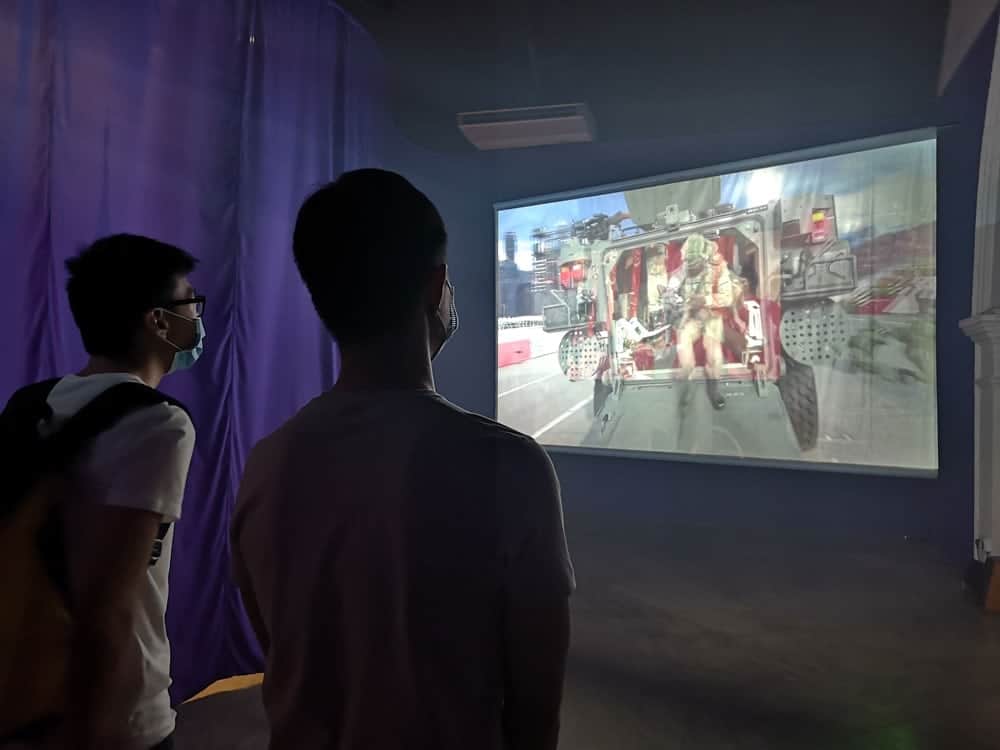
The anxieties that The Hyperrestrained Order might trigger in the average NSman notwithstanding, the overall multi-sensorial experience of immaterial bodies is a welcome one especially at this stage of our gradual loosening circuit breaker restrictions. The texture and materiality of the various works and their overlapping soundscapes centre us squarely in our bodies, as if recalibrating our senses after a prolonged period of disuse.
It’s a small show, but its website augments and extends the exhibition experience in some thoughtful and surprising ways. I highly recommend exploring the section that Yun Teng calls “Entanglements”. There, one can leaf through the curator’s correspondence with Miss Q and enjoy the soothing playlist of songs that this hybrid orchid offers up as a non-verbal means of communication. You can also read the poignant responses to ila’s questionnaire about the places that people have missed around Singapore. The entanglements are not all available for viewing yet, and the website is alarmingly prone to crashing, but take it the way you take all other things in these fragile times – with a dash of patience and an open mind.
______________________
immaterial bodies is ongoing at the Objectifs Chapel Gallery from now until 1 Nov 2020.
Feature image courtesy of Seet Yun Teng and Objectifs.
